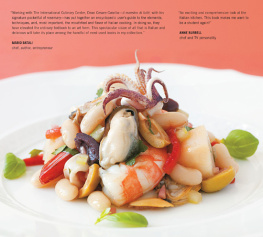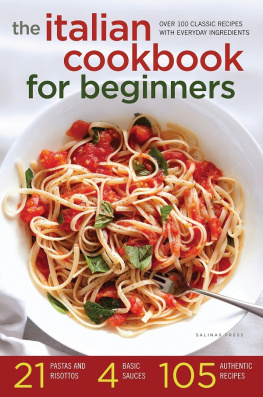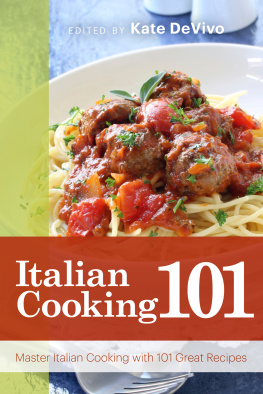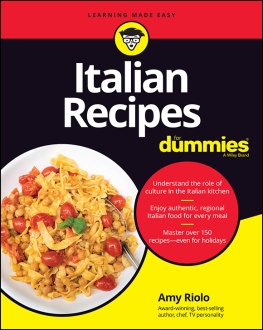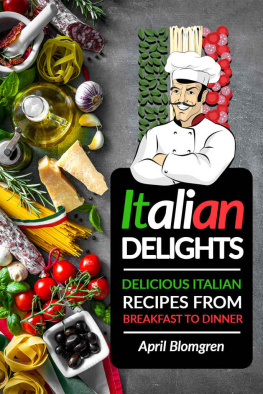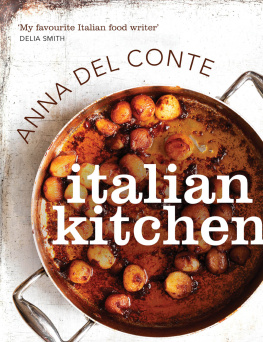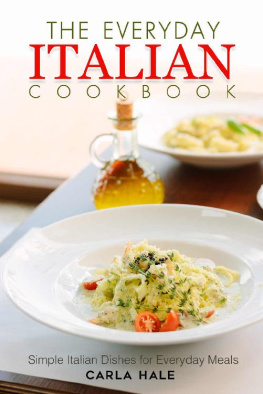The Fundamental Techniques of Classic Italian Cuisine is a comprehensive guide to traditional Italian cooking. In this book, the skills needed to render the flavors and details of classic Italian recipes are expertly taught by Dean Cesare Casella. Based on the curriculum of The International Culinary Centers School of Italian Studies, this indispensable book breaks down the techniques of Italian cooking in a way that will appeal to home cooks as well as professionals.
The book begins with an overview of the Italian meal and a full description of the primary ingredients used in Italian cooking. More than two hundred classic recipes follow, beginning with a mouthwatering array of antipasti and culminating in a spectacular variety of desserts. Chapters on cheese-making, stocks and basic sauces, rustic soups, pasta, risotto, pizza and breads, meats, fish and shellfish, and vegetables offer all manner of primo and secondo courses in between.
The final section of the book is a compendium of professional techniques, with a detailed discussion of each technique and a description of how it is taught at The International Culinary Center. These lessons are illustrated with hundreds of step-by-step photographs, and also include information about restaurant organization and practices. This section may be used in conjunction with the recipes in the book, as an aid when cooking from other cookbooks, or on its own, as inspiration.
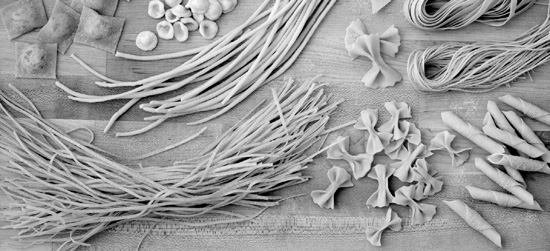



Published in 2012 by Stewart, Tabori & Chang
An imprint of ABRAMS
Text copyright 2012 The International Culinary Center
Photographs copyright 2012 Matthew Septimus
Props for the photography were generously provided by Richard Ginori 1735 (richardginori1735.com), Sferra Fine Linens (sferra.com), Rosenthal Sambonet (rosenthalusa.com), and Alessi (alessi.com).
All rights reserved. No portion of this book may be reproduced, stored in a retrieval system, or transmitted in any form or by any means, mechanical, electronic, photocopying, recording, or otherwise, without written permission from the publisher.
Library of Congress Cataloging-in-Publication Data:
Casella, Cesare.
The fundamental techniques of classic Italian cuisine / with Cesare Casella and Stephanie Lyness ; the International Culinary Centers School of Italian Studies ; photographs by Matthew Septimus.
p. cm.
Includes bibliographical references and index.
ISBN 978-1-58479-990-0 (alk. paper)
eISBN 978-1-61312-391-1
1. Cooking, Italian. I. Casella, Cesare. II. Lyness, Stephanie. III. International Culinary Centers School of Italian Studies. IV. Title.
TX723.C29739 2012
641.5945dc23
2012004135
Editor: Natalie Kaire
Project Manager: Kate Norment
Designer: Liam Flanagan
Production Manager: Kathy Lovisolo
Abrams books are available at special discounts when purchased in quantity for premiums and promotions as well as fundraising or educational use. Special editions can also be created to specification. For details, contact specialsales@abramsbooks.com or the address below.

ABRAMS The Art of Books
195 Broadway, New York, NY 10007
abramsbooks.com
Foreword
Good food has no boundaries. France slips into Italy, China touches Thailand, and the Pacific waters bridge the California beaches to the Japanese shores.
So it was not surprising when two dapper men from Italy came to visit The International Culinary Center in New York in 2004. Albino Ganapini and Riccardo Carelli had a dream to create a culinary school outside Parma with one of the greatest chefs in Italian history, Gualtiero Marchesi (known as Il Divino!). Their vision was to bring young budding chefs from all over the world to study Italian cuisine in a gorgeously renovated palazzo in the picture-perfect town of Colorno.
After a very agreeable lunch, our French dean, Chef Alain Sailhac, and I decided to visit with Ganapini and Carelli in Italy. We discovered their passion as well as their commitment to quality and experienced some of the most delicious food we had ever tasted. It reminded me of when I had visited the Ferrandi school in Paris twenty years earlier as I considered starting The French Culinary Institute. When Chef Alain said, This is great; we should do it, I knew an Italian school was in our future. What fun!
But challenging. The course in Colorno would be very different from the courses we had previously offered. First, our students would be going abroad. Second, the Colorno course was primarily based on the cuisine of the region, Emilia-Romagna and northern Italy. Our students would need a broader curriculum that encompassed all the regions of Italy, and they would need to be adequately prepared for international living and learning.
Who could help us form a comprehensive preparatory course so our students would be able and ready to attend the program in Italy? Who could help us negotiate with the Italians for a broader curriculum?
Everyone we asked, from Marcella Hazan to Arlene Feltman Sailhac (founder of De Gustibus at Macys), responded emphatically, Cesare! Of course, they were referring to the great Tuscan chef Cesare Casella, who had taken New York by storm. The idolized chef from Lucca once prompted shopkeepers to yell, Cesare! Cesare! Come back! Come back! when we walked down the towns main street together.
Cesare agreed to be our dean and we were off to an exciting start. To house this dynamic program, we even created a new school, The School of Italian Studies at The International Culinary Center. In order for the students to fully extract the glories of the cuisine during their stay in Italy, they needed to be well armed. A new ten-week curriculum was created that included intense immersion in the Italian language, an overview of all the regions of Italy, and an introduction to the basic techniques common to all styles of Italian cooking.
In 2006, we accepted our first students and began to prepare them for a nine-week intensive program at the school in Colorno followed by a nine-week stage (internship) in an authentic regional Italian restaurant. Cesare not only displayed a voluminous knowledge of cooking from the Alps to Sicily, but he also seemed to know personally every major chef from both sides of the Apennines. His passion for teaching was immediately obvious. His love of sharing his expertise was infectious.
He labored for two years with one of our seasoned teachers, Chef Susan Lifrieri, and the terrific food writer Stephanie Lyness to present our students with a binder full of history, techniques, tips, and recipes that would serve as the curriculum for our new program. After hundreds of hours of refinement, it is ready to be put into a text.
This book will cut a swath through Italy and get to the core of the techniques and products that a good cook needs to know in order to be a good Italian chef. There truly is no course that has been so lovingly and painstakingly conceived and presented. We are happy now to share it with you.
Dorothy Cann Hamilton
Preface
Next page
